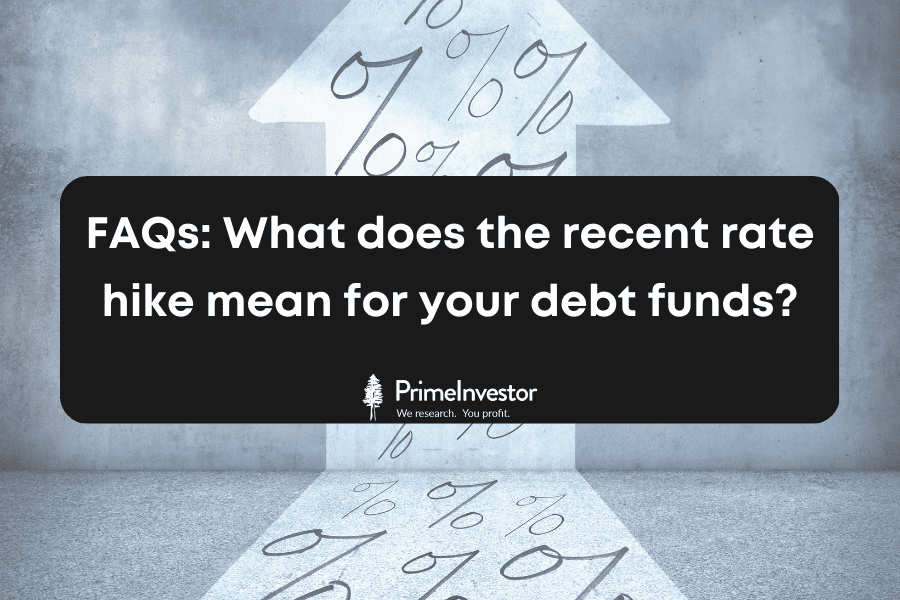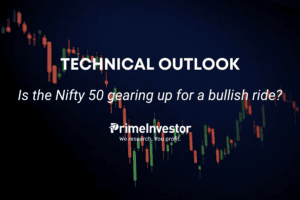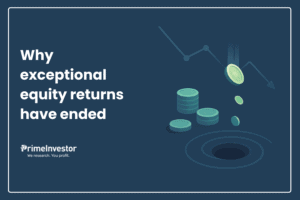We bet you must be tired of hearing about rate hikes and debt funds and strategies! But if your queries, comments and activity on our newly-launched PrimeInvestor Community are any indications, there are still several questions many of you have over your funds.
So, here’s collecting them all and explaining what you should be doing with your debt funds and if you need to do anything different in light of the latest round of rate hikes.

Q1: Why is RBI still raising rates, if inflation is under control?
The monetary policy was along expected lines; while there were indications that the interest rate cycle was peaking (explained in our 2023 debt outlook) there was certainly no expectation that the RBI would hold off on further raises. Markets had built in smaller and few rate hikes for 2023. But let’s briefly explain why rates have been hiked again.
- One, though the WPI and CPI inflation rates are trending lower, CPI inflation is still above the RBI’s target of 4%. According to the monetary policy statement, the inflation outlook remains mixed. The monetary policy projects CPI at 5.3% for 2023-24.
- Two, key factors that drove inflation earlier – food and fuel – have cooled off but core inflation remains sticky. Core inflation measures inflation without the volatile food and fuel. This has moved to 6.1% in December 2022, driven by pressures in health, education, and personal care prices. Core inflation remains above the RBI’s tolerance band, meaning that the RBI isn’t going to take its foot completely off the pedal.
- Third, the RBI has still to contend with rate hikes by the US Fed. The Fed has signalled a continuing rate hike cycle, which makes the position for emerging economies such as ours far more tricky to manage.
So, here’s where we are – the odds are in favour of limited rate hikes from here on given that rates have already been increased significantly, inflation is not raging ahead and is gradually getting into the comfort zone, and domestic economy growth needs to be supported. For more detail on why rates may not move much more, do refer to the debt outlook we published last month.
Q2: So, which are the debt funds that I should have in my portfolio now?
Tricky question! Let’s break it down into your investment timeframe and your investment purpose.
For very short holding periods of up to 1 year, your choices are limited as you need to stick with very short-term categories. However, yields here are quite attractive and have moved up as well. Based on December 2022 portfolios (latest available, as January portfolios are yet to be published), the average YTM for liquid funds stood at a good 6.62%, up from 6.37% in November. This is on par with most bank FDs or better as well. The same holds for low duration, ultra short duration and money market funds which averaged 7.12% for December, up from 7.02% the preceding month. Refer to Prime Funds for fund recommendations.
For those with a holding timeframe of 2-3 years and higher, short-duration funds are good options now to add to your portfolio. These funds suit any investor across risk appetites. They serve well at this point in the rate cycle to earn and maintain superior return. Their maturity period puts them in a sweet spot to pick up and hold to on the higher interest rates for the medium term while being low on volatility. Longer-maturity debt categories will take longer to see returns improve and will be more susceptible if the rate action springs a surprise. The table below shows the average portfolio YTM of short duration funds from just prior to the start of the rate hike cycle to now.
Do note that adding short duration funds to your portfolio is a strategy we had recommended in December last year, as signs pointed to the rate cycle peaking – this is just a reiteration of that call on debt fund strategies to follow given the rate scenario.
For those with a higher risk appetite and a long-term timeframe, there are two strategies that may be adopted:
- One, add funds with longer portfolio maturities. As rates are nearing the peak, yields will be high and prices low. Further downward impact on bond prices and fund NAVs would be limited. The fund categories you can consider here are corporate bond funds, medium duration funds, and constant maturity funds. This will be a buy-and-hold strategy; all you’re doing is to invest at a time when prices are low much like buying into a stock correction. These funds will see performance pick up as they gradually adds bonds with higher yields and the rate cycle reverses, offering capital appreciation through bond price rallies. This apart, the longer duration will also mean that, when the rate cycle shifts down, the fund would be locked into long-term papers with superior yields which can support returns at that time.
- Two, play duration - that is, enter longer-duration funds now and exit the funds when interest rates move into a downward cycle. This differs from the strategy above – in this case, you need to exit the fund and book profits as fund returns shoot higher as bond prices rally when rates move down. You will need to keep an eye on the rate cycle and the returns in order to do so. It is not a buy-and-hold strategy. Refer to our detailed December debt fund strategy on how to play duration. This is something you will have to handle yourselves. With longer maturities, we usually suggest only the entry time as exits should be based on your own returns from your entry point.
Another option to just buy and hold and lock into good yields is through target maturity funds. Ideally, match your timeframe to that of the TMF. Remember that TMFs return your money; this opens up reinvestment risk if your timeframe differs. You can go for TMFs with SDLs for the best yield opportunities at this time. Going by December portfolio yields, TMFs in the 4-6 year maturity period offer the best yield-maturity trade-off. However, even if you have shorter timeframes years, the available TMFs for such duration do offer reasonable yields compared to short duration debt funds or other shorter-maturity debt funds.
Q3 But I have different funds in my portfolio! Do I exit these, or stop SIPs, and start investing in the funds given above?
NO. It is unnecessary to shift around your portfolio based on what interest rates are doing. At the risk of repeating ourselves, do remember the following:
- Debt fund portfolios adjust to the rate cycle at differing paces depending on their maturity and strategy. Longer the maturity, the more time it takes for portfolio YTMs to pick up. You need to allow these funds to go through such phases, when returns may also be low. So, if you have, say, a long-duration fund or a corporate bond fund in your portfolio, let it remain. The fund will eventually pick up as it gradually adds bonds with higher yields.
- The point above is why minimum investment timeframes and fund suitability are very important in debt funds. When you invest in a debt fund, understand what the fund is, how it delivers, and how long you should hold it. If it does not meet your risk and timeframe, do not go for it. If it does, invest and make sure to hold for the minimum time required!
- Once you hold for the minimum period, it will continue to deliver and you can hold it for any number of years. So, if you have, say, a 7-year timeframe and you have ultra-short duration funds in your portfolio, you don’t need to exit these to invest in the debt strategy we may issue or to tap into current opportunities. The ultra-short fund will also pick up on the rate cycle!
- If you constantly try to shift your debt funds to try and catch every opportunity there is, you will just wind up churning your portfolio. You would be exiting otherwise good funds at sub-par returns – such as if you try to get out of your corporate bond fund now, or your gilt fund. You would be paying unnecessary taxes.
Your debt fund needs to tick three boxes:
- One, a quality, above average performer within its peer set.
- Two, its portfolio maturity and minimum holding period is in line with your own holding.
- Three, its risk level is within your comfort zone.
If these are met, please remain invested. Continue with your long term SIPs, continue holding investments made!
You don’t need to change your portfolio just because you think you are missing out or you come upon an opportunity. Use only any surplus you may have to invest in strategies specific to a rate cycle that we issue.
If you have a timeframe of more than 3-5 years, what you can do to manage different rate cycles is to mix funds of different maturities (called a ladder strategy). For instance, you can hold a short duration fund and a corporate bond fund, or a constant maturity fund. You could mix a banking & PSU fund, short duration, and corporate bond funds. You could hold floating rate funds along with longer-term funds. This will help ensure that at least part of your debt portfolio is always tuned to opportunities arising in a rate cycle.
Q4 I hold only constant maturity funds in my portfolio. Is it better that I add on other funds as well?
Well, that depends on the purpose! If you’re holding the constant maturity fund simply as part of the debt allocation of a long-term portfolio (like our 7-year Prime Portfolio) to balance equity risk, it’s not really necessary to add any other debt fund. Continue with the constant maturity fund alone.
You need to diversify into shorter-term funds only if your timeframe as such is shorter, or your debt allocation to a single fund is higher than 20%. You can also add short duration funds if the volatility in constant maturity funds worries you.
Q5 Should I invest through SIP or lumpsum at this point?
Generally speaking, debt funds don’t have much of the ‘timing’ risk that equity funds have, reducing the need for SIPs. But there are certain times when lumpsum investing works very well in debt – when yields are high (and bond prices low), which is where we are now. When the rate cycle eventually turns lower and bond prices rally, having invested at the peak will help generate better returns.
Therefore, if you have a surplus to invest now, it is best deployed through lumpsum. This is especially true if the funds you intend to invest in are constant maturity, gilt, target maturity, corporate bond (or similar long-duration) funds. This is because bond price reactions to rate cycle changes are sharper in longer-maturity bonds.
Else, if you are just investing regularly towards your goal, SIP investing is fine to continue with and you do not need to necessarily make lumpsum investments. After all, SIP is resorted to, when you cannot invest large sums in one go, anyway!
Please refer to Prime Funds for our debt fund recommendations. Use the MF Review Tool to know if your fund is a buy, sell or hold.







23 thoughts on “FAQs: What does the recent rate hike mean for your debt funds?”
Hi Bhavana
What is the approximate timeframe one should stay put for while investing in the constant maturity fund specifically in order to play duration strategy? Do you expect the debt funds to start giving decent returns in 2 years kinds of timeframe. I mean what is the house view in terms of interest rate movement in 2023 and 2024?
Please guide on that as it will influence the choice of which debt category is appropriate for my case.
We don’t expect rates to fall in 2023. But the time needed for the duration play to pan out is not something we can peg accurately right now. This strategy is best played using any surplus you have to invest, as an additional strategy or to use the opportunity. It is not for any need or goal that has a definitive timeframe. – thanks, Bhavana
In the linked article ( https://www.primeinvestor.in/debt-fund-strategies-current-rate-scenario/ ) constant maturity funds are mentioned in #2 Play Duration whereas in this article same category of funds are mentioned in #1 Buy and Hold strategy
To add to the confusion this article mentions that this is a reiteration of the previous article.
I want to add constant maturity gilt funds to my portfolio. Will it be a buy and hold strategy or a duration play that requires active management?
There is no confusion. A fund can be used in different ways, depending on which strategy you wish to follow.
As explained in point 1, the benefit of buying long-maturity funds now, for a long-term timeframe, is that these funds are at a ‘low’ and buying now will help get in at this low – similar to buying during a stock market correction to make the most of it. You can hold these funds for any length of time.
In point 2 you specifically get into funds like constant maturity funds with the express intention to exit and book the profit when the rate cycle eventually turns down. This requires active management, and you can go for this only if you want the higher returns that can potentially come when rate cycles turn down. Else, you can simply continue to hold the funds – investing now will just help you average costs at attractive levels.
Both these points are explained in the article, and is the same as explained our earlier strategy as well. Hope it’s clear now. – thanks, Bhavana
Comments are closed.